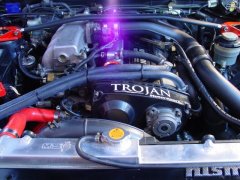Announcements
-
Similar Content
-
Latest Posts
-
Thank you for the manuals. I actually need the full wiring diagrams since I want to build a full harness for my new setup with the Haltech Elite 2500. Any chance someone knows where I can get it ?
-
Oem std front sway and new oem end links mate Rear recently moved to 24mm whiteline sway using the links that came with that
-
Hey mate just out of curiosity what front swaybar do you run and do still use the factory end links if you don't mind sharing that info.
-
They will be (within normal range) and they won't be causing the misfiring.
-
Chinese parts can be good, it's all in the quality assurance, and materials, but, that costs more, but, typically not alot more, it is up to the customer who is getting the parts made, some are happy to pay more for quality good QA and materials because the savings are in the cheap labour costs, so they can sell a quality product at a lower price point, other customers who are getting parts made give no farks and want their products to be as cheap as possible for maximum profit, so minimal QA and average materials Hence why some Chinese parts are crap, whilst other are good Much like parts and other stuff made in different countries around the world, including "made in Australia", "made in Japan", "made in 'Merica" branded gear
-







Recommended Posts
Create an account or sign in to comment
You need to be a member in order to leave a comment
Create an account
Sign up for a new account in our community. It's easy!
Register a new accountSign in
Already have an account? Sign in here.
Sign In Now